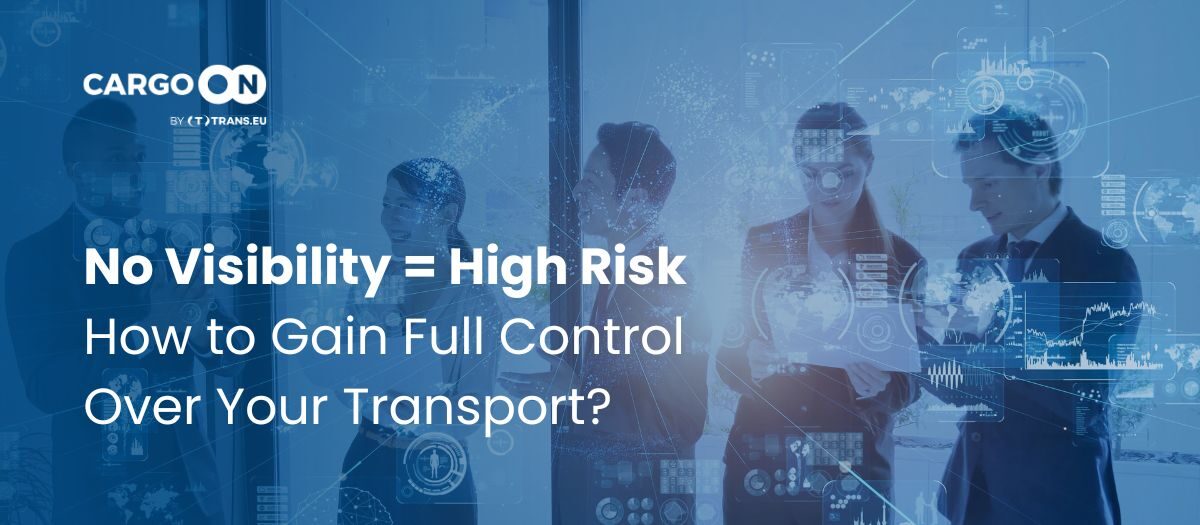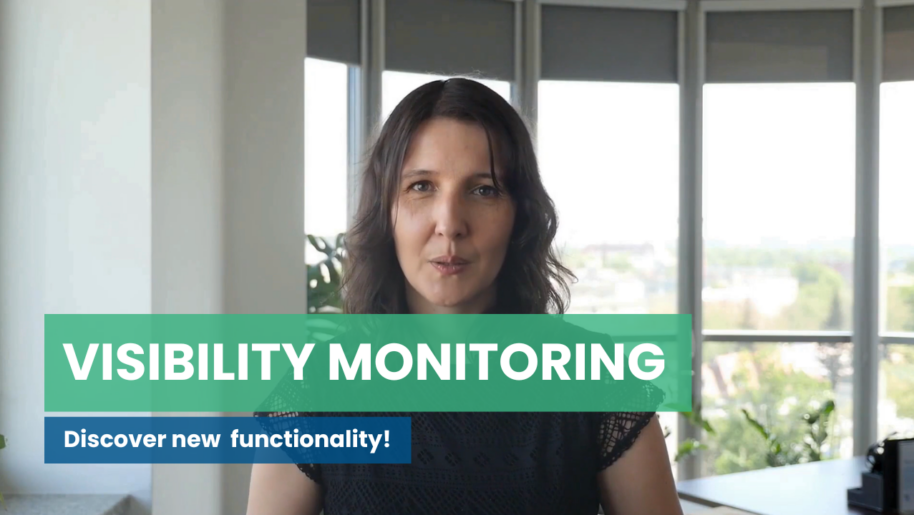No Visibility = High Risk

Transport optimisation, reacting to delays, arriving on time is one issue, but visibility can not only improve your business performance, but also protect the business itself. How much easier would it be to avoid theft and fraud if you knew about it taking place in real-time?
In modern transport and logistics, visibility is more than a seasonal hype and a convenience—it has become a strategic necessity. In a recent text, we have covered how real-time tracking and visibility can help companies optimize routes, react to existing and even potential bottlenecks and delays, thus minimizing transportation time and helping the freight arrive on time.
Thus, avoiding delays, service failures, and compliance breaches can result in costly penalties. Thus, visibility can be a critical factor in lowering costs and avoiding fines.
Losses keep piling up
But the risk that visibility protects companies from goes far beyond not meeting the arrival deadline. In recent years, the logistics industry has been increasingly plagued by cargo fraud and theft. According to the TAPA EMEA Intelligence System, monitoring cargo crimes, between 2022-2024, 157,421 cargo crimes were reported in 129 countries. Even though less than 6% of the cases had a loss value reported, these crimes had a total loss of 2.7 bn euro. To put this number into perspective, this is nearly 2.5 mln euro worth of products being stolen daily during that period (!).
The most recent May results of the TAPA EMEA Intelligence System covering 30 countries across Europe, the Middle East, and Africa reported 341 cargo thefts in just that month. The 71 cases where the value of the lost cargo was provided generated a total loss of 5.96 mln euro. Meaning around 84,000 euros per incident. And this was just one month.
The highest number of thefts in May 2025 occurred in Germany (69), followed by Italy (62), the United Kingdom (38), Spain (35), the Netherlands (20), South Africa (19), France (18), and Greece (12). Clearly, the busiest and most popular European routes are among the most targeted. That’s why monitoring your load and being aware of where it is at the moment, when and where it is moving, is becoming increasingly critical for European carriers.
Eyes on the thieves’ hands
On one hand, the real-time tracking and visibility provide the stakeholders with the precise location of their goods. On the other hand, this at the same time acts as a potential deterrent to those who want to steal the high-value freight or even the whole transportation unit. In this case, the tracking devices will follow them to the hideout.
Not to mention that without visibility and tracking the load, problems, such as the aforementioned theft, are discovered well after they occur, resulting in losing precious time to react.
Knowing where our load is and when it is moving, which is the essence of visibility, is one of the most effective ways to prevent theft. Forwarders and shippers are alerted to unusual activity as it happens, which eliminates the thieves’ key advantage – time. Normally, you would be reaching your driver on the phone while the freight would be long gone and stashed. With visibility, you immediately notice that your transport steers off the designated route. An unplanned stop in an unauthorized location? Same thing, you know right away. Longer stop and delayed route start? You see that in real-time.
Real-time tracking also helps avoid problematic issues by preventing double-brokering, a phenomenon that facilitates cargo fraud. Constant visibility allows shippers to verify who their carriers are and whether the cargo has been passed to an unathorised party. Knowing where and in whose hands the freight is at the moment is key to reducing the risk of fraud.
The size of freight transport fraud and theft may be growing, but so is the rate of recoveries due to new technologies, of which real-time tracking is at the forefront. American supply chain visibility firm Overhaul said that in 2022 it recovered USD 16.5 mln in cargo value for its customers. Furthermore, it also mitigated the loss of more than USD 226 mln worth of cargo through real-time interventions and recoveries.

Insurance benefits
The reduction of risk factors through the implementation of visibility tools also has a direct effect on insurance costs. Using solutions that help companies keep track of their loads can help reduce insurance premiums (thus lowering costs) and expand the insurance coverage. Furthermore, it increases the likelihood of having a potential insurance claim approved. To insurance companies, it shows you are taking precautions to keep your goods out of risky situations and making sure they get to their destination safe and sound.
What’s more, the data from real-time tracking can be very helpful in accelerating the claims process. While traditionally that process involved long investigations and gathering details about the causes of the accident and the chain of events, visibility equipped vehicles provide a lot of the basic data needed in the claims process.
The UK telematics provider Transpoco estimates that the implementation of telematics tools (not only real-time tracking but also monitoring of driving style, fuel consumption, etc.) can help companies reduce insurance premiums by up to 60%. A similar figure is mentioned by the previously referenced Overhaul, when it boasts about reducing its clients’ insurance premiums.
Growing importance
So not surprisingly, for these reasons as well as more route management-oriented issues, visibility has been gaining ground among logistics firms. As Tive, a developer of real-time tracking technologies, revealed in its „State of Visibility 2025” report – 60% of companies deploy Internet-of-Things shipment tracking. That is an increase from 55% recorded in the previous year’s report.
Even more, IoT cargo tracking adoption went up by a staggering 200%.
The growing importance of visibility is emphasised in the 2025 „Logistics Trend Map” developed by the logistics operator Maersk in collaboration with Statista – data aggregator. When asked about the importance of current trends for their company, the questioned 500 logistics experts overwhelmingly pointed to supply chain visibility as the single most important issue (86% of indications). Given that Internet-of-Things came in second shows the importance and potential these two have for the sector.

